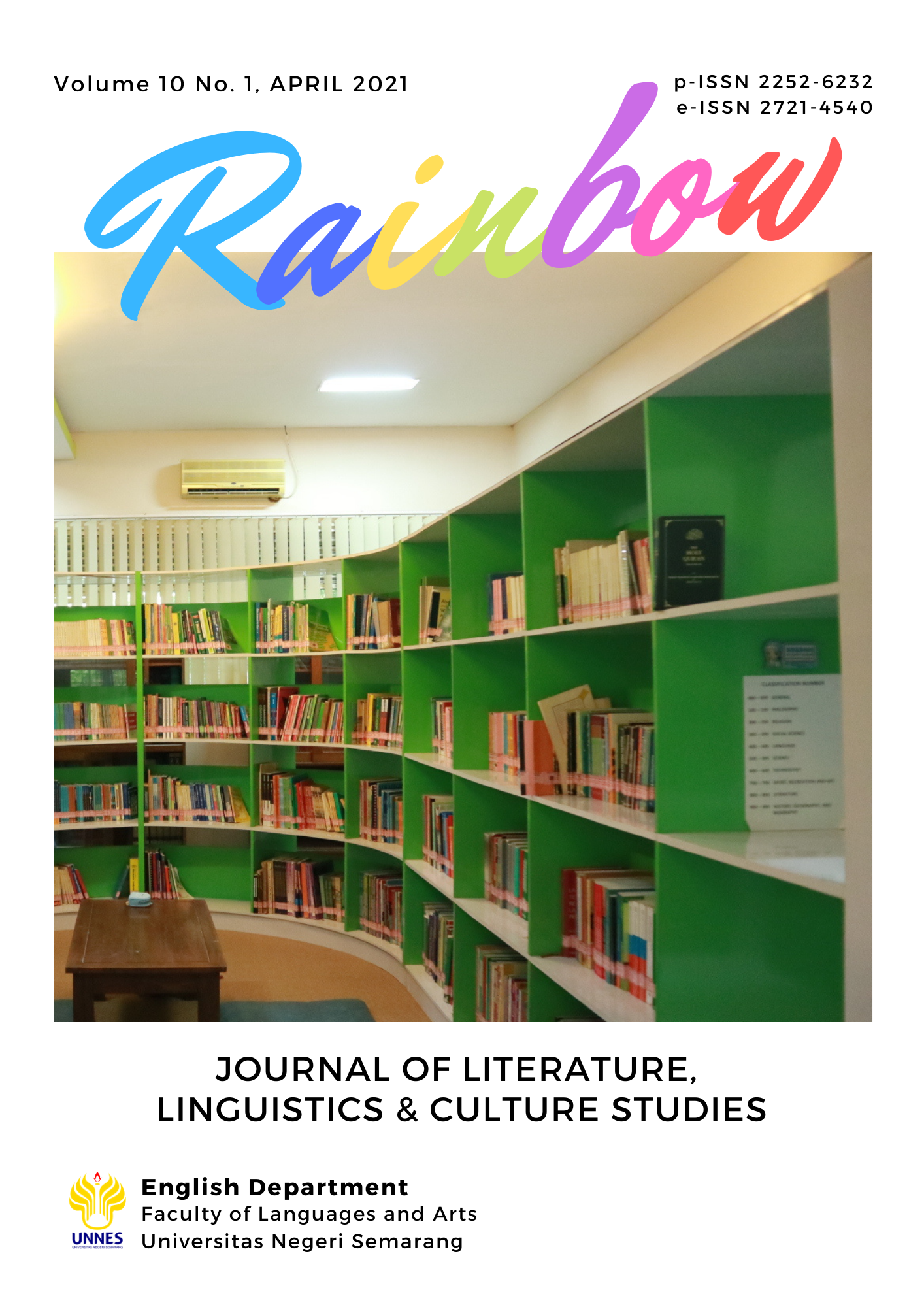Katniss’ Savior: Wilderness in Suzanne Collins’s 'The Hunger Games'
Abstract
From many discussions on wilderness in literary works, only a few focus on the young adult dystopian, even more on Suzanne Collins’s The Hunger Games. For this reason, this article aims to portray the wilderness in the book as the survival resource since the previous studies fail to point out such an issue. This recent study is conducted by descriptive qualitative methods. As the theoretical basis, the discussion employs Garrard’s account of wilderness and Ross’s myth of wilderness in American literature. As a result, the discussion depicts the wilderness as the natural woodland surrounding District 12 and the artificial battleground of the Games in Panem. The woods in Katniss’s district enable her to provide for her family and develop such literacy in the wilderness. This literacy is advantageous in the Games arena, thus helps Katniss to be one of the winners. The findings might provide such an insight to the reader to live harmoniously with nature, even more with the wilderness.
References
Barr, J. (2020). The idea of the wilderness: Gender and resistance in le roman de silence. Arthuriana, 30(1), 3–25. https://doi.org/10.1353/art.2020.0000
Bland, J., & Strotmann, A. (2014). The Hunger Games: An Ecocritical Reading. Children’s Literature in English Language Education, 2(1), 22–43.
Burke, B. (2013). Teaching Environmental Justice through The Hunger Games. The ALAN Review, 43(2013), 53–63.
Collins, S. (2008). The Hunger Games. Scholastic Press.
Garrard, G. (2004). Ecocriticism. Routledge.
Jhansi, S., & Rao, Y. D. (2020). Wilderness as Refuge : A Study of A K Ramanujan’s Folktales of India. International Journal of Latest Research in Humanities and Social Science (IJLRHSS), 03(10), 78–81.
Kullmer, P. M. (2016). Dystopia in Young Adult Fiction (Unpublished senior thesis).. Alpen-Adria-Universität Klagenfurt.
Marx, L. (2000). The machine in the garden: technology and the pastoral ideal in America. Oxford University Press.
Noda, A. A. L. (2018). Reconstructing the Wilderness: Finding Identity, Culture and Values in Filipino Children’s Literature. Journal of Ecocriticism, 8(1), 1–8.
Ross, P. A. (2006). The Spell Cast By Remains The Myth of Wilderness in Modern American Literature. New York: Routledge.
Sharma, E. (2014). The Young Adult Dystopia as Bildungsroman: Formational Rebellions Against Simplicity in Westerfeld’s Uglies and Roth’s Divergent (Unpublished undergraduate thesis).. http://scholarship.claremont.edu/scripps_theses/431
Stewart, C. (2013). The Unofficial Hunger Games Wilderness Survival Guide. Wisconsin: Living Ready Books.
Vogel, P., & Sena, K. (2020). Peril and Possibility: Wilderness as a Space of Becoming in Tolkien’s The Children of Húrin and Whedon’s Firefly and Serenity. Journal of Tolkien Research, 10(1), 1–13. https://scholar.valpo.edu/journaloftolkienresearch/vol10/iss1/6
Wistey, I. C. (2020). Descent into Wilderness: Katabasis of Displaced Heroism in Charles Brockden Brown’s Edgar Huntly. ELECTRYONE, 6(2), 1–18.







